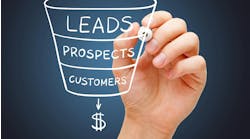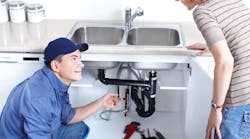How should you measure the success of your service operation? What are the Key Performance Indicators that you can use to judge the performance of both your customer service reps and your service techs?
Quality Service Contractors Business Coach Beth Dobkin has spent her career figuring out what to measure in a service operation and what those KPIs should be. Dobkin started with her husband’s plumbing and HVAC service company, which they sold to a Fortune 500 company in 2000. The corporation hired Dobkin as their general manager, and she ran the business for another four-and-a-half years. Next, she became a business coach for a national plumbing franchisor before joining QSC in April 2012. Not to give away her age, but Dobkin has a lot of experience. The information below comes from her experience as a business coach, not from a survey.
CSR Conversion Percentage (number of requests for service actually booked vs. how many requests for service were received) should range between 92%-100%.
Number of Booked Calls should be between 92%-100%.
Cancellation Percentage (number of booked calls canceled before dispatched) should be less than 2%.
Number of Dispatched Calls should be approximately 98% of booked calls.
Technician Close Percentage (the national average is 82%. Anything above that average is acceptable).
Number of Completed Calls should be no less than 80% of booked calls.
Percentage of Estimates (i.e., a price given for work that’s not emergency driven) should be less than 15%.
Percentage of No-Go's (work that was an emergency that the customer had to have someone else repair and we lost) should be less than 5%.
Service Request Completion percentage (optimal is 91%, the average is 82%).
Recommendations (additional work suggested by the tech but not booked on a sold job) the techs should suggest something on 100% of jobs.
Completed Home Inspections (should be on every job but 80% is acceptable and above average for companies doing this.)
Average Ticket for each technician (cumulative sales/number of sold service calls). The national average is $513.
Shop Job Average (shop monthly sales/total monthly completed service calls) keep track of your number.
Net Sales (as compared to breakeven) strive for 20% net.
Gross Profit Percentage (should remain above 55% for a 10% net profit assuming SG&A expenses average 35%).
Average Sales Per Truck per month (the national average is about $19,500 total service volume but not total sales) so the average service tech should be doing $25,000 minimum. These numbers are difficult to get because not all companies calculate sales the same.
Customer Retention percentage (should be collected from your dispatching system and 60% or above is great).
Add-on Sales ratio (should average 89%-140% with a really good service tech. An average tech will get 40%-88% of the additional work he recommends. This means that for 100% of the jobs a tech goes on, he should be offering additional options. A really good tech will show the benefits to the customer and allow the customer to buy on almost all invoices. Remember, these are averages, so a tech may sell no add-ons for three or four jobs but then out of 10 jobs he may sell 12 add-ons.
Product Sales (chemicals, maintenance products, filters.) If it is a company focus because of an incentive or a contest for the month, the numbers increase. Product sales average about 20% of the calls run from Dobkin’s experience.
Market Penetration (population of service area/sales). This completely depends on the size of your market. The last Dobkin saw, the average for our industry was a pathetic $1.54 per capita but she has worked with companies that are as high as $8.59 per capita. Again, size of territory matters. Ask a Hawaiian contractor what his per capita is. It will blow you away.
Morale of Shop (attendance is often an indicator). This has to be based on company policy, changes within the organization or sudden changes in behaviors. There’s no real measurement for this. Dobkin and her husband measured in their business based on company attendance and tardiness policy, production and efficiency of each position, and participation in company activities and meetings.
Efficiency Factor (billable vs. non-billable hours) The national average for service is about 50% efficiency. She has seen 42% - 78% based on different business models.
Discount Percentage (frequency of flat rate pricing discounts to secure the job). This is seen much too often! The number should be as low as possible.
Membership Plan Sales. This is affected by your customer retention rate. If you are servicing a customer base with 85% retention, then you will not be selling as many membership plans because most of your customers have probably already signed up. However, for new customers only, you should be selling plan memberships to a minimum of 40% of them.
Repair vs. Replacement Percentages. This depends on how your techs have been trained and their expertise. This number is very skewed so not worth stating.
Maintenance Plan Sales. Every contractor is different on this as well. The average is about 22%.
So what are the KPIs and performance metrics that you keep track of for your operation? Tell us or ask questions about KPIs on CONTRACTOR’s Plumbing Talk Forum.


